Request Appointment
Request Appointment
Fill out the form below and our team will be happy to get back to you as soon as we can!
Testimonials
If I could give a few sets of 5 stars I would, I've been getting treated by Jen for several years now, and it has changed my life around. Going from doctors, chiro and some massage therapists all telling me they didn't know what was going on. Saw Jen and immediately came to a solid conclusion and devised a treatment plan that has worked. Got me off of all my pain meds and now to the point of just managing my symptoms.
Vittorio C.
I had an exceptional experience at the new Stride Physiotherapy clinic! Blake and Jen are friendly and welcoming. What a beautiful space in such a great location! Blake was so helpful in getting rid of some aches and pains that have been slowing me down from doing the activities and racing that I love to do! I feel i can trust them to keep my body working in optimal condition.
Linzee K.
Professional, cozy, clean, and modern clinic! I like that the treatment rooms were more private than most other clinics I have been to. Jen and Blake are knowledgeable and motivated to give you the best treatment to meet your personal goals. Booking is so easy online, I would highly recommend this place!
Jessica C.
I’ve visited them for a few injuries/aches and pains. The appointments have helped immensely to get me moving the way I want to and continue to live an active lifestyle. They have also helped me to be proactive by recommending some maintenance to do at home to prevent the same issues from happening again. Super friendly and helpful staff!
Blair C.
Stride's new physiotherapy facility is an exciting opportunity for the community to get access to top notch health care! Adding a facility with experienced professionals is always a plus for patients, reducing wait times for treatment - not to mention the updated equipment and services offered.
Excellent Facilities
Corporate Wellness Programs are an investment in both your employees and your company’s well-being. Studies have proven that companies that engage in office wellness practices have less absenteeism, higher revenue per employee, and an increase in staff physical and mental well-being. Healthier employees are happier and happier employees are more productive. That’s a win all around! Our experienced Kinesiologist, Brittany, joins you and your team at your organization for an in-person strength and mobility class. We have multiple options for Corporate Wellness to suit your teams needs. MONTHLY We come to you 1x/month for 30 minutes to ensure your employees are taking care of their body and mind with exercise. SEMI MONTHLY We come to you 2x/month and deliver you and your co-workers a 30 minute custom strength/mobility workout. MONTHLY + In-person 30 minute custom strength/mobility workout for you and your co-workers. PLUS a 4-week custom 30 minute exercise program for your team to complete on their own. Exercises emailed out with instructional videos. WE OFFER THE FIRST SESSION FOR FREE! Don't see what you're looking for? We are happy to make a custom Corporate Wellness option that best suits your organization, so reach out with any questions and inquiries!
Stride practitioners offering Corporate Wellness
[all_team_members service='16074']Corporate Wellness
What is a running assessment?
In Red Deer, Stride Physiotherapy offers a running assessment specifically designed to improve your form and prevent injuries. This assessment goes beyond just watching you run. It combines our Physiotherapist's evaluation of your posture, strength, and flexibility with advanced technology.
Our Physiotherapist uses motion sensors to capture detailed data on your running technique. This data reveals things like your ground impact, stride symmetry, and how efficiently you absorb shock. By combining this information with our Physiotherapy expertise, we can create a personalized plan to help you run smoother and stronger!
What are some benefits of getting a running assessment in Red Deer?
- Injury prevention. Running assessments can help identify biomechanical issues that might contribute to injuries. Identifying these early can reduce your risk of developing overuse injuries.
- Improved running form. This can lead to increased efficiency, reduced energy expenditure, and improved performance.
- Reduced pain and fatigue. Running with proper form can help to reduce pain and fatigue while running.
- Faster recovery. Running assessments can also help runners recover from injuries faster by correcting imbalances that might be delaying recovery.
- Better shoe selection. A running assessment can help you choose the right shoes for your feet and running style, helping you improve comfort and performance!
Booking a running assessment at Stride
Mike, our seasoned Physiotherapist, provides running assessments as someone who is a seasoned runner, himself! In fact, Mike is an ultramarathoner! You can take comfort in knowing you’re being helped by an expert who also loves the same sport you enjoy, from beginner level to pro.
Running Services in Red Deer
Mike also offers these three comprehensive running services in Red Deer to help you perform at your best. Click each one to explore more!
Running Services
Ergonomic Assessments
Ergonomic assessments are systematic evaluations of the conditions of a work environment. The premise of these assessments is to identify and address environmental variables that may contribute to discomfort, pain and potential injury. Based on your preference, one of our trained workplace assessors can help to identify the potential problem areas of a workstation either in-person or virtually. Below are the some of the items analyzed in a Stride Ergonomic Assessment:- Workstation Setup: This involves evaluating the key features of workstations, including desk height, chair ergonomics, monitor placement, keyboard and mouse positioning, and the overall layout of the workspace.
- Tools and Equipment: Ergonomic assessments consider the implements employees use in their work, such as phones, mice, computers, and hand tools.
- Employment Demands: Assessors evaluate the physical demands of specific job tasks which may include lifting and carrying heavy objects, repetitive motions, and periods of stagnation such as sitting or standing.
- Environmental Factors: Ergonomic assessments also consider environmental factors such as lighting and noise that can lead to irritation and reduction of performance.
- Education and Exercise: One of the goals of the assessment is to have the means to detect and correct the variables that can lead to workplace malaise. Recommendations may include exercises to combat pre-existing problems or to prevent problems from beginning in the first place.
- Documentation: After the assessment, a report is conducted by your assessor, outlining key themes and recommendations.
Stride practitioners offering Ergonomic Assessments
[all_team_members service='3420']Ergonomic Assessments
Hand therapy is a form of rehabilitation aimed at restoring function, mobility, and strength to the hand, wrist, and forearm. It involves the assessment and treatment of conditions affecting these areas, including injuries, surgeries, chronic conditions, and neurological disorders. Treatment techniques in hand therapy may include therapeutic exercises, manual therapy, splinting, sensory re-education, desensitization techniques, and modalities such as ultrasound or electrical stimulation. The focus is on improving range of motion, strength, coordination, and functional abilities to help patients regain independence in activities of daily living, work, and leisure pursuits. Hand therapy is often recommended following
- Traumatic injuries: This can include fractures, dislocations, lacerations, crush injuries, and amputations resulting from accidents, falls, or sports-related incidents.
- Repetitive strain injuries: Conditions like carpal tunnel syndrome, tendonitis, and de Quervain's tenosynovitis often develop due to repetitive motions or overuse of the hands and wrists.
- Orthopedic conditions: This can include various orthopedic conditions such as arthritis, trigger finger, Dupuytren's contracture, and ligament injuries.
- Postsurgical rehabilitation: Hand therapy plays a crucial role in the recovery process following surgical procedures such as tendon repairs, joint replacements, nerve repairs, or hand reconstruction surgeries.
Stride practitioners offering Hand Therapy
[all_team_members service='3963']Hand Therapy
Small Group Exercise classes (4-6 people) led by Brittany that focus on building strength and regaining function in a specific area of the body. Classes are 30 minutes long and each session will involve 6 classes. Clients will book for all 6 and if can not make a class will be emailed exercises to do at home. What to expect: 5 mins warm-up, 25 mins of strength/mobility/flexibility work What to bring: water, runners, wear workout clothes Who’s it for: Anyone that is looking to build strength back from a previous injury or that is looking to strengthen for injury prevention/ better function of daily living.
Stride practitioners offering Group Classes
[all_team_members service='3897']Group Classes
One-on-one exercise sessions with certified personal trainer. Each session is tailored to the individuals personal goals and abilities. Personal training is a progressive, effective and efficient way to learn proper form, experience overload and achieve strength and body composition goals.
Stride practitioners offering Personal Training
[all_team_members service='71']Personal Training
All of our Kinesiology services are run and coordinated by the amazing Brittany! She boasts a Kinesiology degree from the University of Alberta with a focus on Sport Performance, currently owns a fitness business called GymClass, and works at Stride. Her service offerings include Personal Training, One-on-one Exercise Therapy, and Group Exercise Therapy classes.
Stride practitioners offering Kinesiology
[all_team_members service='71']Kinesiology
AI Powered Gait Assessment
We use an AI powered motion sensor to measure your running! The sensor was developed after 10-years of research, and using AI to refine the sensor algorithm. We can measure ground impact, shock absorption, stability, and symmetry.
Stop guessing. Start assessing.
The technology we use is valid and reliable, and helps us measure components of your running that we couldn't otherwise.Actionable Insights
Our tech captures relevant and actionable data that we can use to help you become a more efficient and resilient runner. We provide you with individualized feedback, exercises, and training recommendations to help you run better.Integrated Assessment
We perform a standard assessment, watch you run, and measure your running. Then we piece it all together!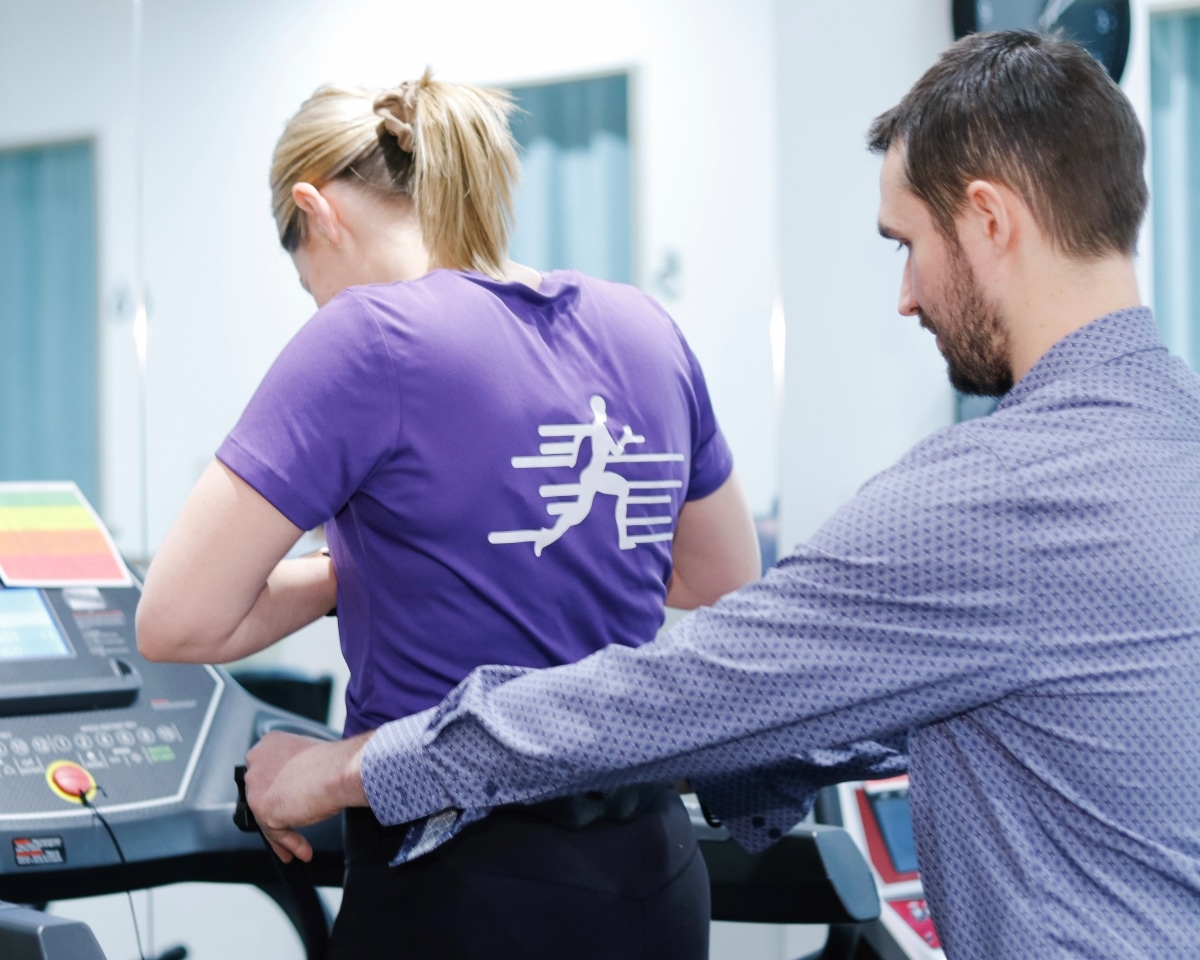
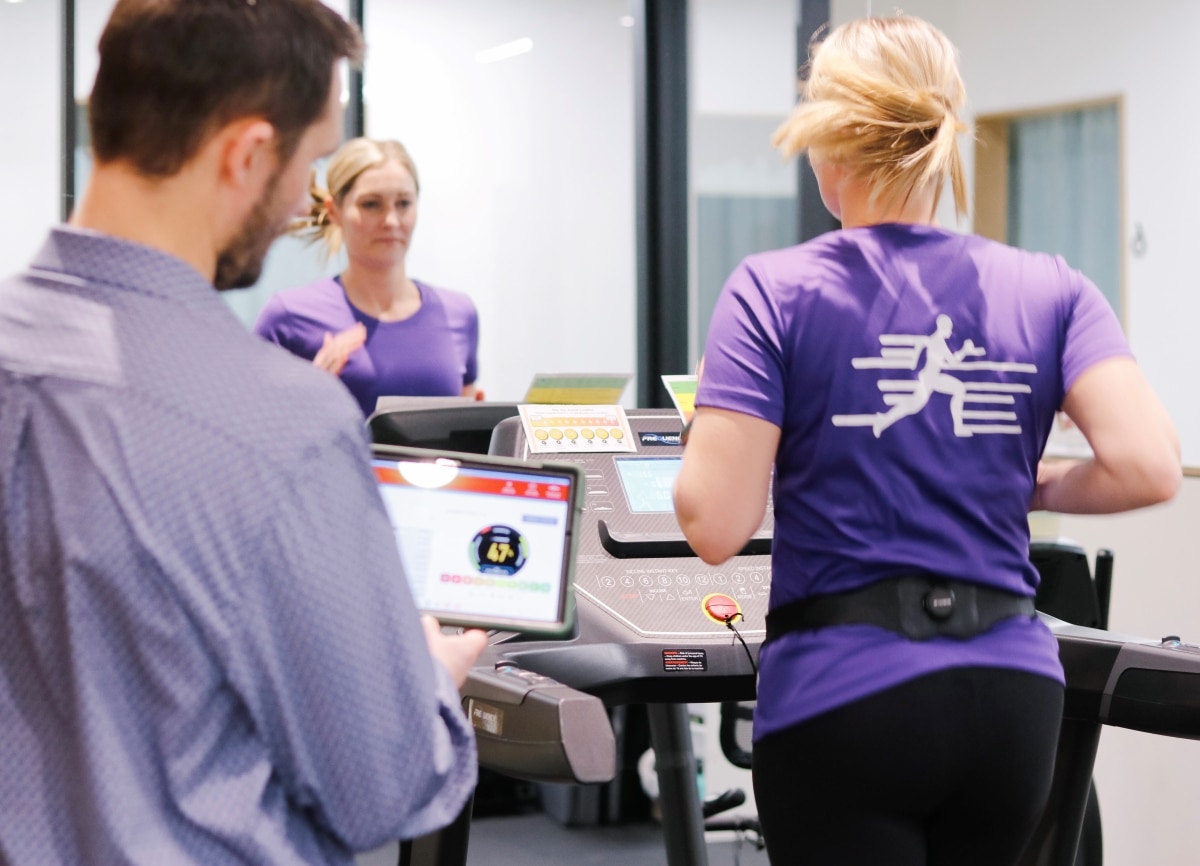
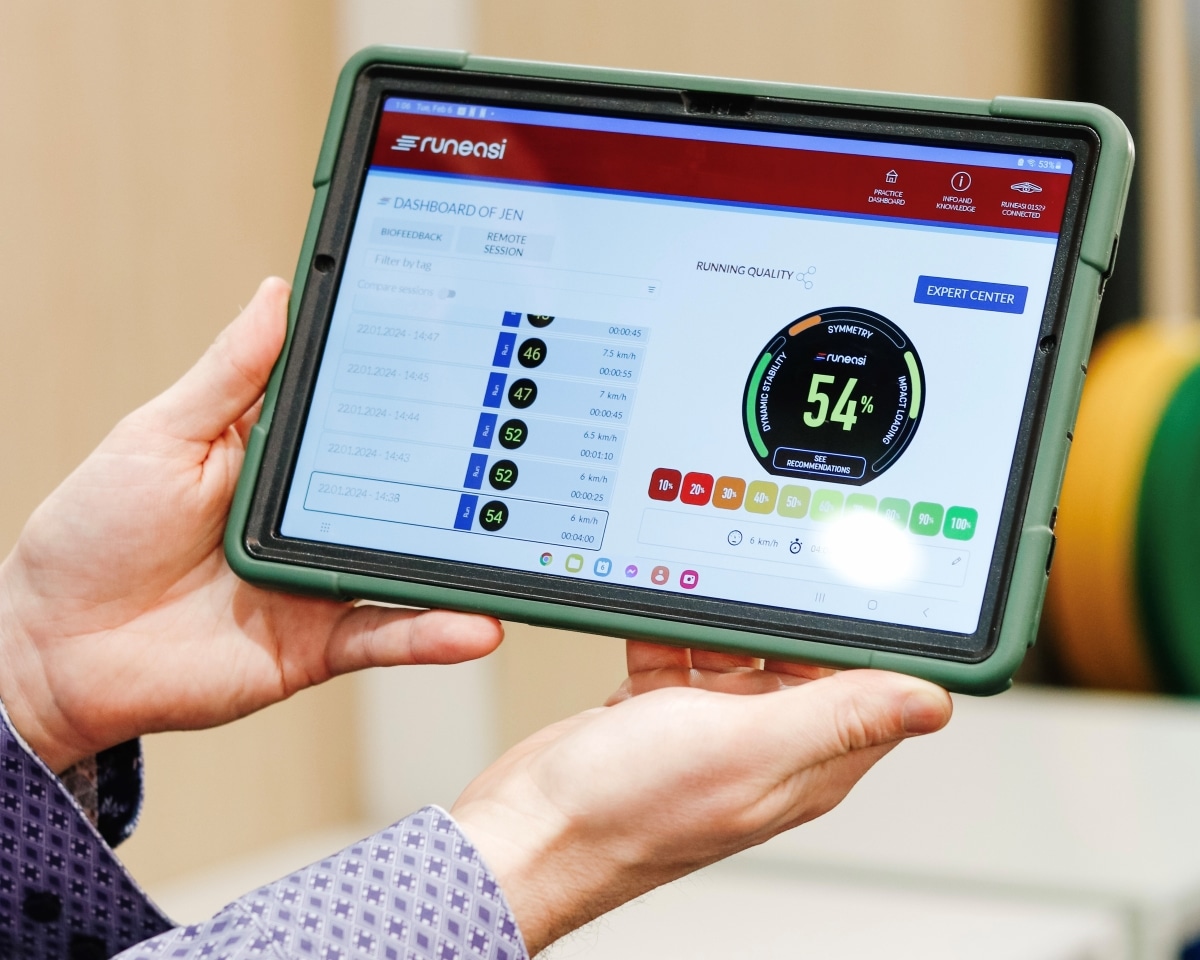
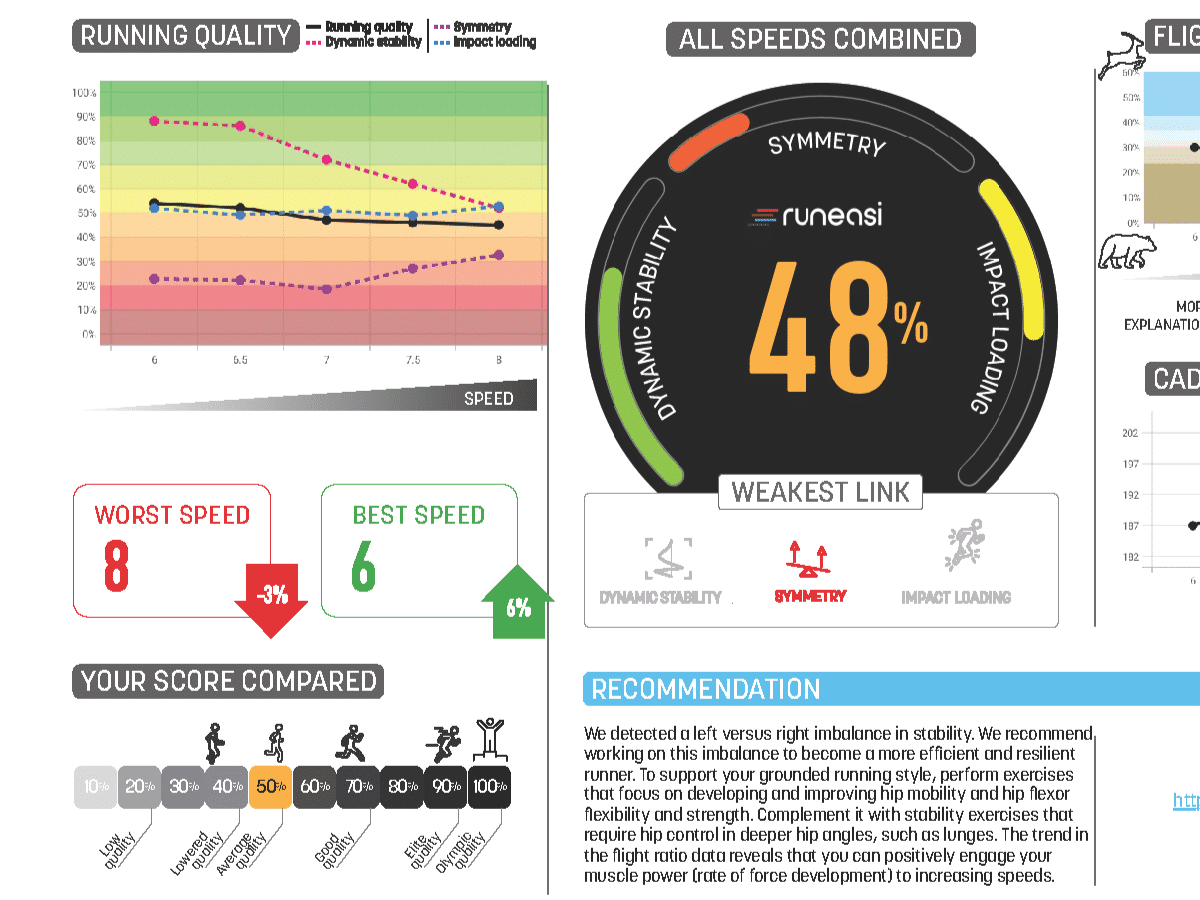
Performance
Our gait analysis can provide insights into how you become a more economical runner.Injury Prevention
Gait analysis data can be used to help prevent injuries, and provide insights into why certain injuries are occurring.Benchmarking
After we collect the initial data, we can see how your gait changes over time and with interventions.Frequently Asked Questions
- Standard physiotherapy assessment: We assess your flexibility, strength, and muscle control before we look at your running. This assessment can help us explain why you are running the way you are.
- Objective gait analysis: Using the motion sensor, we can capture data such as your ground impact, side-to-side movement, symmetry, shock absorption, cadence, and ground contact time. These metrics tell us about how you are running, and where you can make improvements. Our eyes can't tell you some of the data we capture from the motion sensor. We usually test you at multiple speeds. In many cases, gait quality begins to deteriorate as speed increases.
- Visual gait analysis: We still use our eyes to see how you are running. The motion sensor actually makes it easier for us to watch you run. For example, instead of counting how many footsteps you're taking per minute, we can focus on other components of your running. The sensor can also help us to objectify what we are seeing.
- Intervention: We provide exercises and/or training recommendations to help you run better. Changing gait can be challenging and some components are easier to change than others. We make sure to provide you with the most actionable recommendations to improve your running.
- Reports: You will receive your gait analysis report via email, after the appointment!
- Over 10-years, the sensor has been correlated with 3D gait analysis. 3D gait analysis technology is used in gait laboratories for research purposes.
- Correlated with force-plate data: The sensor tells you how hard you are hitting the ground, without using force plates. This is one of its most useful features.
- Easy to setup: The sensor is easy to use! It takes very little time to setup, and does not require additional equipment. The sensor is attached to a special neoprene waistbelt that fits securely to your pelvis. The minimal equipment requirements, and easy setup/takedown, makes the gait assessments less costly for everyone.
- Avoids data overload: The gait sensor focuses on important metrics. We try to avoid data overload and focus on information that is actionable and important.
- Be recovered: Don't do any strenuous running or other activities (ie. weightlifting or hiking) at least 48-hours before the gait assessment.
- By well-hydrated and nourished: Don't start a new diet before the race. Make sure you are eating a well balanced diet. Again, we just want to make sure you are feeling good for the run.
- Clothing and shoes: Bring indoor running gear, and bring the shoes you would normally wear (unless they have spikes built into them that may damage the treadmill). You will be running on a treadmill. If you wear multiple pairs of shoes, you can bring the other shoes too.
- We want to see how you are running when you are feeling good, and before the onset of any aches or pains (if possible).
- Once you start hurting, your gait will change, and it may not represent what it looked like prior to the pain starting.
- We need to establish a baseline: If this is the first time you're being assessed, we need to start somewhere. Having your baseline data while you're fresh is better!
- It is important to test you at multiple speeds. For elite level runners, gait quality is usually well maintained at all running speeds. For everyone else, speed tends to result in a reduction of running quality. It is important to pick that up, because that could be where injuries are starting from. If you are tired, the data at higher speeds may change.
Your Gait Analyst
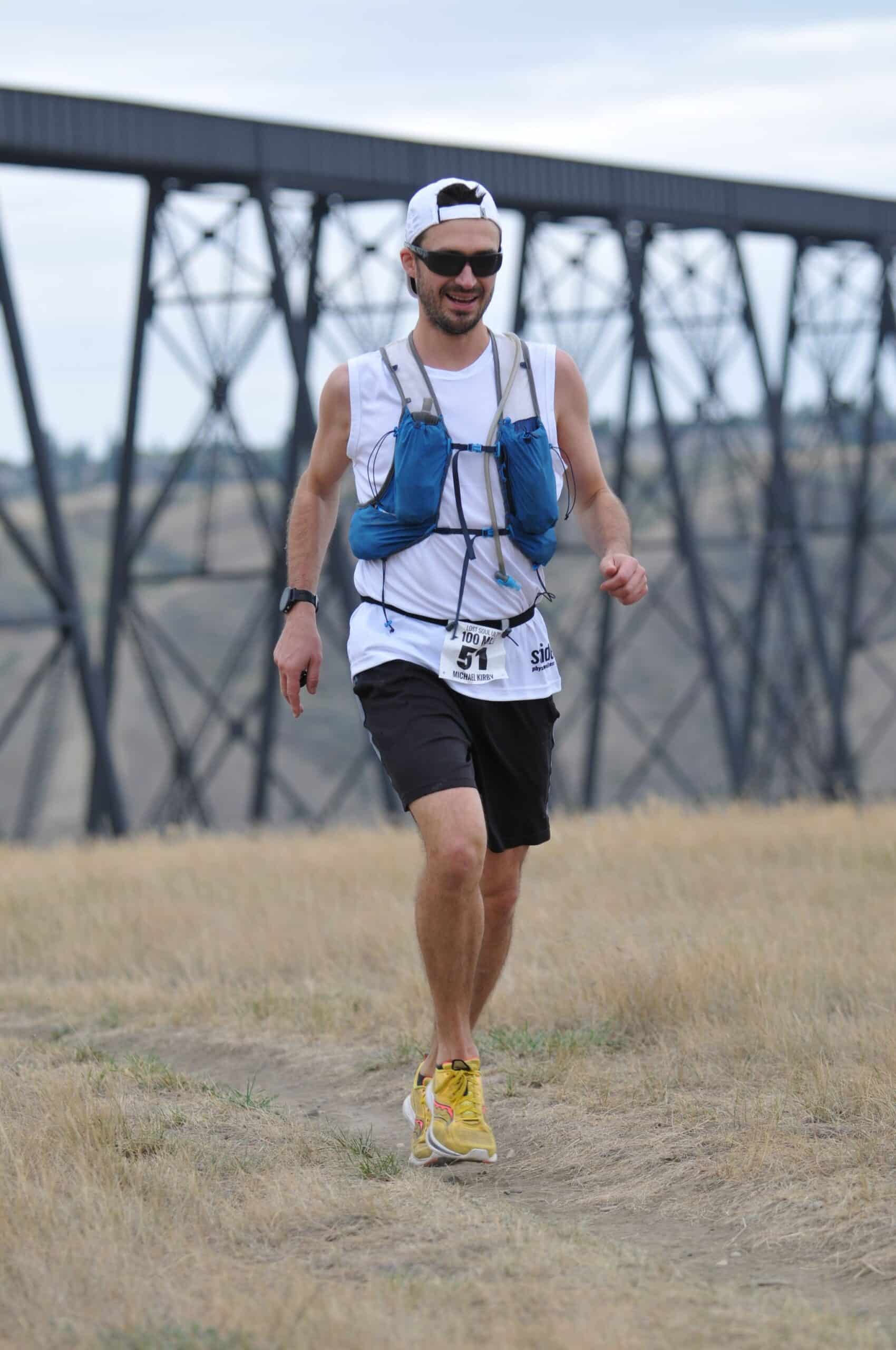
Michael Kirby
Education
Master of Science in Physical Therapy from the University of Alberta (2016/17) Bachelor of Kinesiology (BKin) from the University of Calgary (with Distinction)Post-Graduate Training
The Running Clinic Certified+ Professional UESCA Certified Ultrarunning Coach Loading The Injured Runner (Certificate) Certificate in Cognitive Behavioural Therapy (Level 1) Licensed to Order Diagnostic Imaging Licensed to Perform Dry Needling / IMS Licensed to Perform Spinal ManipulationsObjective Gait Analysis
Using heated or cooled stones, which are carefully designed with your body’s anatomy in mind, Jade Stone Massage stands out with its skillful placement on the body or integration into the massage session. These stones, cut to different shapes and sizes, harness Jade's protective qualities to heal stressed organs and expel toxins. Jade Stone massage utilizes the tailored shapes of the stones to allow for a deep tissue therapeutic experience without the usual discomfort that comes with deep massage work. Jade's unique blend of iron, magnesium, and calcium allows it to efficiently heat or cool to the desired temperature and hold the temperature comfortably for the duration of the treatment. Benefits of Jade Stone Massage:
- Increased circulation
- Provide treatment similar to hydrotherapy
- Balance the body
- Reduce inflammation
- Calm the nervous system
- Flush internal organs and systems
- Improve vitality
- Improves sleep
- Alleviate back pain
- Help with Sciatica
- Decrease Hypertension
- Relieve Arthritic pain
The dual hot/cold therapy operates in a manner similar to a vascular flush, comparable to hydrotherapy and thermotherapy. It amplifies circulation, effectively flushing internal organs and the circulatory system, facilitating the elimination of toxins from the body.
Stride practitioners offering Jade Stone Massage
[all_team_members service='2708']Jade Stone Massage
Coaching for All Runners
Reduce your risk of injury, and maximize your chances of success. Receive an individualized training plan and take the guesswork out of your running journey.
Convenience & Accountability
Your program is delivered via the TrainingPeaks App. TrainingPeaks will sync directly with your running watch, so your coach can keep on top of all your activities!
Exercise Program
Receive an exercise program along with your running schedule. The exercises are unique to your needs. If you already have injuries, we can integrate your rehab program as well.

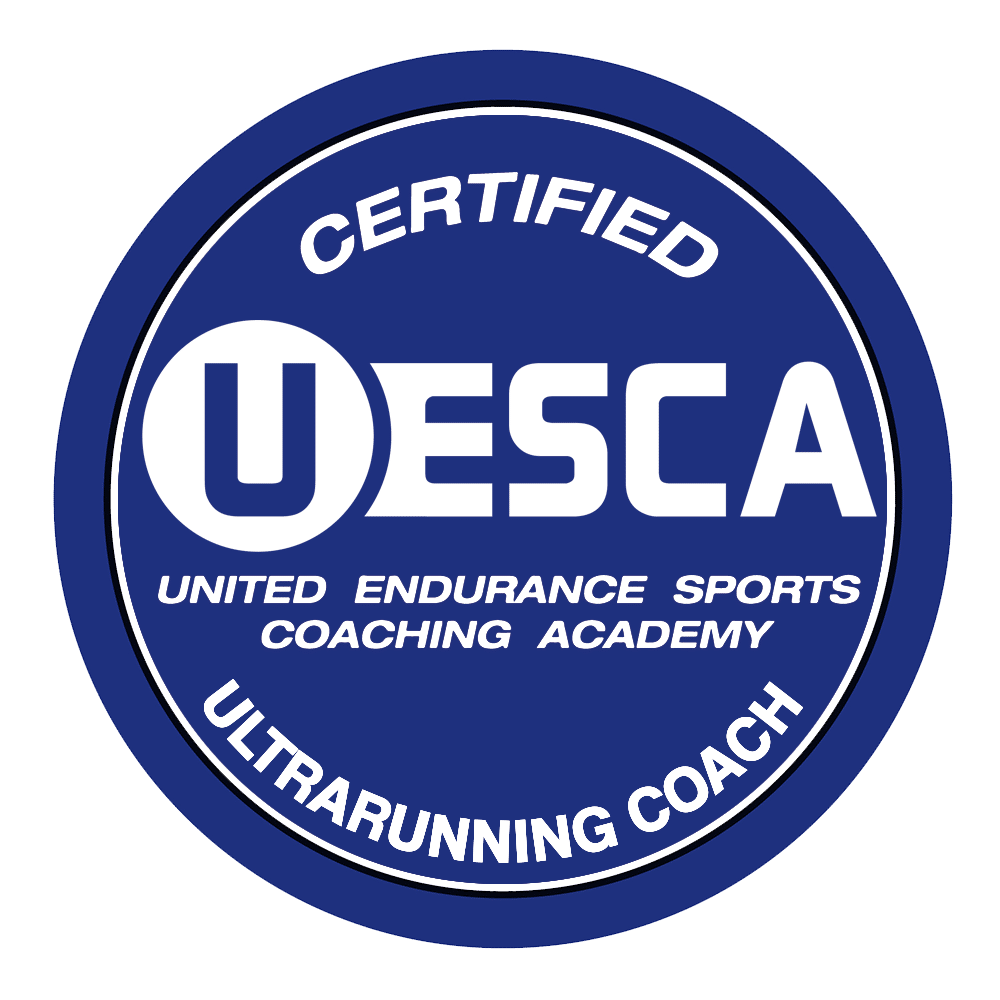

Training Plans
You will receive 4-weeks of programming at each appointment. Programs are delivered on the TrainingPeaks App, and a premium membership is included in the service. There is much more included, so please read on!
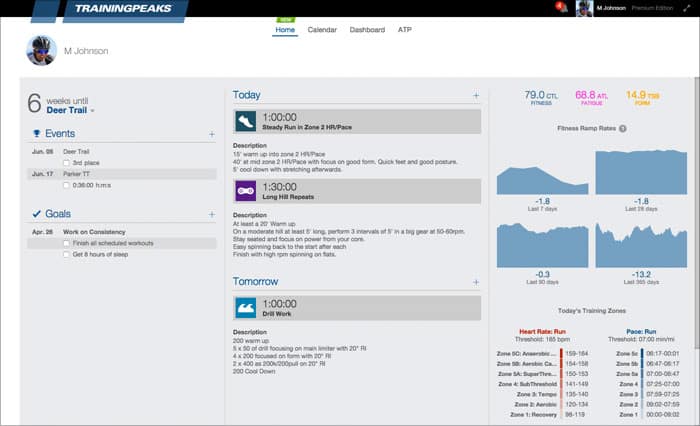
- All of your runs, including their duration, intensity (speed), and elevation change (if needed).
- If you are using a bike, elliptical, or other form of cardio, this will also be programmed into your schedule.
- An individualized exercise program is also provided, and referenced in your schedule. Your other exercises need to be timed appropriately with all of your runs, so we can't leave this out. At Stride, we use a program called Physitrack to deliver all strength and mobility exercises. Your calendar will reference these exercises, so you know when to do them.
- Are you involved in other sports or activities not mentioned here (ex. a HITT class)? It is crucial that we consider all of your physical activities, so these are also referenced within your schedule. Recovery time is very important, so we need time all your activities around one another.
- Initial Assessment: Our first appointment is always in-person. After you fill-out your intake forms, we dive into your running history and all of the information you give us to create your first schedule. At your appointment, we will go through the schedule and review your running goals. We perform an orthopaedic assessment, and develop an exercise program for you to get started with.
- Follow-up Appointments (in-person): These appointments are for your next 4-weeks of training. Doing in-person follow-up appointments can be valuable, even if you're not injured. Many runners appreciate a "tune-up", to make sure their body is ready to go for the next 4-weeks. We may recommend that the appointment is in-person if we planned to progress your exercise program.
- Follow-up Appointments (virtual): If everything is going 100% and you don't want to come in to the clinic, we can do a virtual appointment. The details can also be delivered with an email, and we can connect online or over the phone to go through it all.
Training Programs for Both Injured & Non-injured Runners
Training programs can significantly decrease your risk of injury, and can also be exactly what you need to over-come an injury.
Uninjured Runners
Runners have a high prevalence of injury, and many of their injuries are due to training errors. Having a professionally developed program can significantly reduce your risk of injury, and maximize your likelihood of success.
Injured Runners
Many injured runners are told to stop running altogether, and sometimes this can be a mistake. While there is a time and place to stop, many times the thing that broke it (running) is also the thing that helps to fix it!
- Avoid Stress-shielding: Stress-shielding occurs when we get injured, so we stop doing everything to protect the injury. There is usually some protection needed, especially in the acute phase of an injury, but eventually it is important to begin loading the injured area again. Stress-shielding is when the injured tissue (ex. tendon) is so protected, that even the healthy parts begin to get weak and lose their integrity. When returning to activity after complete protection, it can be a longer road to get back to where you were.
- Optimal Loading = Better Healing: Our tissues adapt to load (training) as long as it is the right amount and we give ourselves enough recovery time between workouts. Injured tissue is no different. The tissues that got injured with running are often loaded more effectively during running! While strength training can be an effective way to rehabilitate your injury, sometimes running is the best way to target the injured tissue. which can stimulate positive effects.
- It can take careful "load management" to get the best results. There is usually a certain amount of running that can be tolerated, and it is important not to cross the line. We work hard to figure out where that line is, and then build from there.
- Mike has also worked with many runners who simply haven't had their issue properly addressed, and require referrals to other providers. Some injuries require more than physiotherapy. If needed, Mike can order diagnostic imaging, and/or refer you to another healthcare provider who can help.
- Some injuries create a "bottleneck" in the training process, or limit only certain types of running. For example, some injuries may make it so you can train on flat terrain, but can't do as well going up hills. Mike will work with you to get through the bottleneck, while working on your strengths.
About Your Coach






